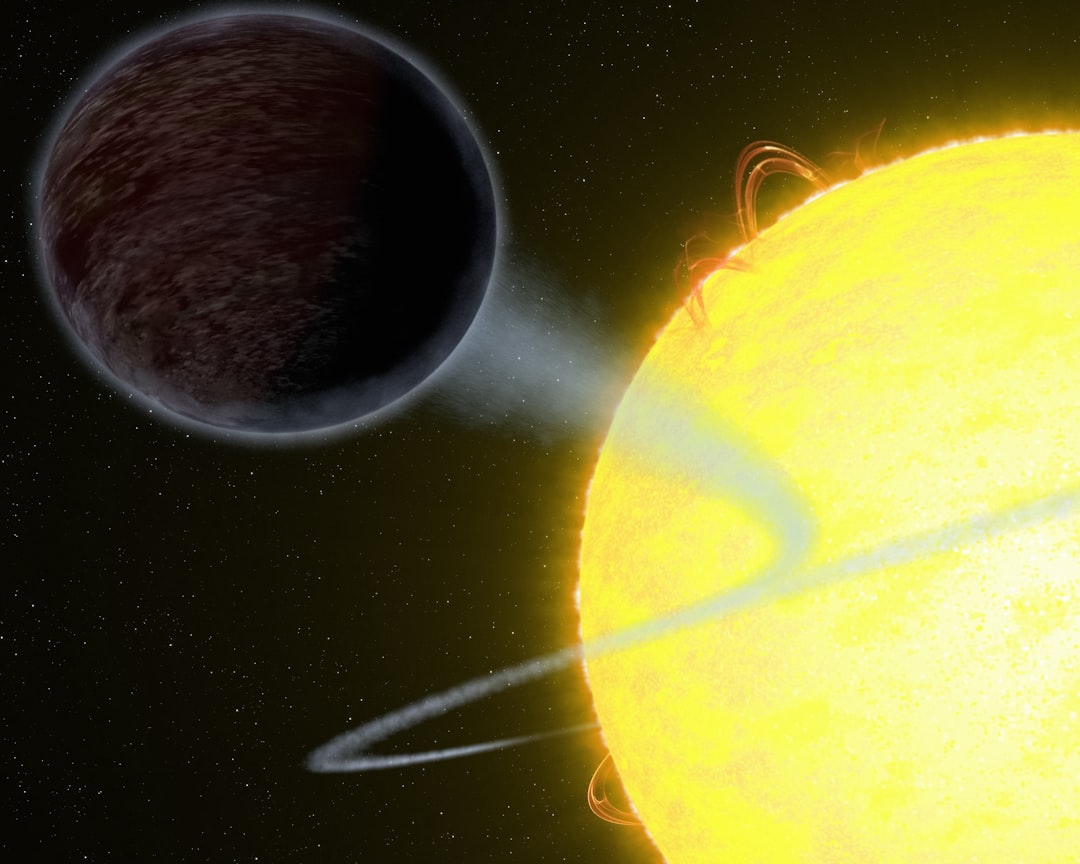“`html
Habitable Planet Alert: Scientists Find Exoplanet Topping the Charts!
Get ready for some exciting news from the cosmic frontier! Astronomers have just announced the discovery of a new exoplanet orbiting within the habitable zone of its star. This groundbreaking find, building on years of exoplanet hunting, is fueling hopes for finding life beyond Earth and pushing the boundaries of our understanding of planetary formation.
What’s So Special About This Exoplanet?
This newly discovered exoplanet, tentatively named “Kepler-186 f-b” (the “b” indicating it’s the first planet discovered in that system following the naming convention), resides in what scientists call the “habitable zone” or the “Goldilocks zone.” This is the region around a star where the temperature could potentially allow for liquid water to exist on the planet’s surface. Remember, liquid water is crucial because, as far as we know, it’s essential for life as we know it.
Beyond just being in the right spot, Kepler-186 f-b exhibits other promising characteristics. Initial estimations suggest its size is comparable to Earth, making it a rocky planet, which is more conducive to supporting life than a gas giant like Jupiter or Saturn. While astronomers are still working to determine the exoplanet’s atmospheric composition, the potential for liquid water and its Earth-like size immediately make it a prime target for further study.
How Was This Planet Discovered?
The discovery of Kepler-186 f-b leverages the innovative techniques of transit photometry. This method, championed by missions like NASA’s Kepler Space Telescope, involves carefully monitoring the brightness of distant stars. When a planet passes in front of its star from our perspective (a transit), it causes a slight dip in the star’s brightness. By precisely measuring these dips and their frequency, scientists can infer the size and orbital period of the planet.
While the Kepler Space Telescope played a monumental role in identifying Kepler-186 f-b as a potential candidate, follow-up observations from ground-based telescopes like the European Southern Observatory’s Very Large Telescope (VLT) further validated the discovery and helped refine the estimations of the planet’s size and orbital parameters. It’s a collaborative effort involving both space-based and ground-based observatories working in tandem to unravel the secrets of distant planetary systems.
Why This Discovery Matters
The discovery of Kepler-186 f-b is significant for several reasons. Let’s break down the key aspects:
- Hope for Extraterrestrial Life: Finding a potentially habitable exoplanet strengthens the possibility of life existing beyond Earth. While it doesn’t guarantee life, it provides a crucial data point in the ongoing search.
- Refining Habitable Zone Models: Each new exoplanet discovery helps scientists refine their models of habitable zones. Understanding the factors that influence planetary habitability, such as atmospheric composition and stellar activity, is crucial for identifying future potential candidates.
- Understanding Planetary Formation: Studying diverse exoplanetary systems offers invaluable insights into the processes of planetary formation and evolution. Kepler-186 f-b provides a unique opportunity to compare and contrast different planetary environments, helping us understand why some planets are habitable and others are not.
- Technological Advancements: The search for exoplanets drives technological innovation in areas like telescope design, data analysis, and atmospheric characterization. As we strive to detect and study fainter and more distant planets, we’re pushing the limits of our scientific and engineering capabilities.
The Impact of Finding Another Earth
Imagine a world where we confirm the existence of another Earth-like planet teeming with life. The impact would be profound, touching upon various facets of our society:
- Scientific Revolution: It would revolutionize our understanding of biology, chemistry, and planetary science. We would gain new perspectives on the origins of life, the potential for its evolution in diverse environments, and the factors that contribute to its sustainability.
- Philosophical and Cultural Shifts: It would challenge our anthropocentric worldview and force us to reconsider our place in the universe. The discovery could spark profound philosophical debates about the nature of existence, the meaning of life, and our responsibilities to other life forms.
- Technological Boom: It would accelerate technological advancements in space exploration, communication, and resource management. The desire to explore and potentially colonize new worlds would spur innovation in areas like propulsion systems, life support technologies, and advanced robotics.
- Global Collaboration: The search for and study of extraterrestrial life requires international collaboration and cooperation. It could foster a sense of shared purpose and responsibility among nations, leading to greater cooperation in other areas of science and technology.
Future Outlook: What’s Next for Kepler-186 f-b?
While the discovery of Kepler-186 f-b is exciting, it’s just the beginning. Scientists are eager to learn more about this intriguing exoplanet. The next steps involve:
- Atmospheric Characterization: One of the top priorities is to determine the composition of Kepler-186 f-b’s atmosphere. This could be achieved using powerful telescopes like the James Webb Space Telescope, which can analyze the light that passes through the planet’s atmosphere as it transits its star.
- Refining Planetary Parameters: Astronomers will continue to refine the estimates of Kepler-186 f-b’s size, mass, and orbital parameters. More precise measurements will help us better understand the planet’s density, internal structure, and potential for habitability.
- Searching for Biosignatures: Ultimately, the goal is to search for biosignatures – indicators of life – in Kepler-186 f-b’s atmosphere. This could involve looking for specific gases, such as oxygen or methane, that are known to be produced by living organisms on Earth.
The discovery of Kepler-186 f-b underscores the immense potential of ongoing and future exoplanet missions. As we continue to explore the cosmos, we are likely to discover many more potentially habitable worlds, inching us closer to answering one of humanity’s most profound questions: Are we alone?
Further Reading:
- NASA’s Kepler Mission – Official NASA website about the Kepler Mission.
- BBC Science & Environment – For up-to-date science news.
“`

